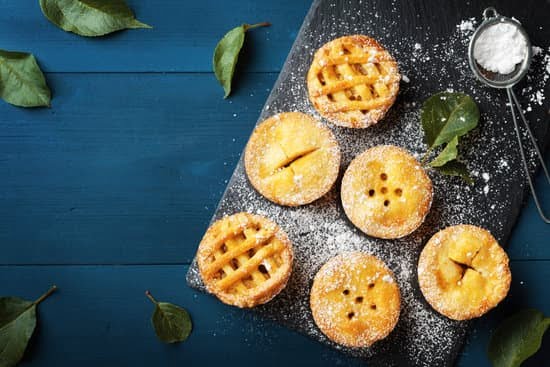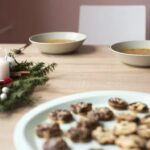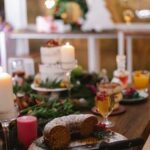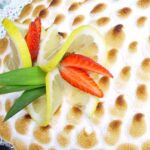Decorating cakes is not only a delightful way to unleash your creativity, but it also adds a special touch to any occasion. Whether you’re a novice or an experienced baker, having the best decorating tips can elevate your cake game and make your creations truly extraordinary. In this article, we will explore the world of cake decorating and provide you with invaluable insights, techniques, and inspiration to create stunning cakes that will amaze your friends and family.
Cake decorating is an art form that allows you to transform a simple dessert into a masterpiece. It brings joy and excitement to both the creator and the recipient. From birthdays to weddings, anniversaries to holidays, a beautifully decorated cake becomes the centerpiece of any celebration. The right combination of flavors, textures, colors, and designs can leave a lasting impression on everyone’s taste buds and hearts.
So grab your apron and let’s delve into this exciting world together. Get ready to impress your loved ones with stunning cakes that not only taste delicious but also look like they came straight out of a bakery. Join us on this journey as we explore the best decorating tips for cakes and encourage you to practice, experiment, and have fun along the way.
The Importance of a Good Cake Base
When it comes to cake decorating, one of the most crucial factors to consider is the cake base itself. The flavor and texture of the cake can greatly impact the overall success and enjoyment of the finished product. Whether you’re baking a simple sheet cake or a multi-tiered masterpiece, choosing the right cake flavor and texture is essential.
Choosing the Right Cake Flavor
The first step in creating a delicious cake base is selecting the perfect flavor. With so many options available, it’s important to consider both personal preference and the occasion for which you are baking.
Classic flavors like vanilla and chocolate are always crowd-pleasers, but don’t be afraid to experiment with unique flavors like lemon, coconut, or even lavender. Consider matching your cake flavor to any fillings or frostings you plan to use as well, ensuring that they complement each other for a cohesive taste experience.
Considering Texture
In addition to flavor, considering the desired texture of your cake is equally important. Some prefer a light and fluffy sponge cake, while others may enjoy a denser pound cake or moist chocolate fudge. The choice of texture can also depend on how you plan to decorate your cake.
For example, if you want to create intricate designs with buttercream frosting or fondant decorations, a sturdier texture may be more suitable to support the weight of those elements. On the other hand, if you’re aiming for a more rustic look with piped borders and floral patterns using buttercream icing, a lighter texture might be preferred.
No matter what flavors or textures you choose for your cake base, it’s always helpful to experiment and try new combinations. Don’t be afraid to get creative and discover different tastes and textures that work well together. Remember that practicing and experimenting is part of what makes decorating cakes fun.
Essential Tools and Equipment for Cake Decorating
Cake decorating is a delightful and creative activity that allows you to transform a plain cake into a stunning work of art. To achieve professional-looking results, it’s crucial to have the right tools and equipment at your disposal. In this section, we will provide you with a detailed guide on essential cake decorating tools and equipment that every baker should have in their arsenal.
Cake Pans
The foundation of any well-decorated cake is a perfectly baked base. Invest in good quality cake pans that are sturdy and have straight sides to ensure even baking and easy release. Round, square, and rectangular pans in various sizes are versatile options for creating different designs.
Icing Spatulas
Icing spatulas come in various lengths, from small offset spatulas for intricate work to large ones for smooth frosting application. These angled spatulas help spread buttercream or ganache evenly over the cake surface and create sharp edges.
Piping Bags and Tips
Piping bags are indispensable for adding decorative elements to your cake. Opt for reusable silicone or nylon bags that are durable and easy to clean. A variety of piping tips such as round, star, leaf, and petal tips will give you endless options for creating beautiful designs on your cakes.
Turntable
A turntable is an excellent tool for achieving smooth icing application around the sides of the cake. It allows you to rotate the cake while keeping it steady, resulting in even frosting distribution without applying too much pressure.
Offset Spatula
An offset spatula is perfect for smoothing buttercream or frosting on the top of your cakes as well as removing excess frosting along the sides. Its angled blade provides better control and precision during decoration.
Parchment Paper
Parchment paper is your best friend when it comes to lining cake pans, preventing sticking, and ensuring easy release. It also acts as a helpful tool for creating stencils or piping templates.
Cake Leveler
A cake leveler is essential for achieving even layers when torting or leveling cakes. It ensures that each layer is of consistent thickness, making it easier to stack and decorate.
By having these essential tools and equipment in your cake decorating kit, you will be well-equipped to create beautiful and professional-looking cakes. Remember, investing in quality tools will not only enhance your creativity but also make the entire process smoother and more enjoyable.
Mastering the Art of Buttercream Frosting
Buttercream frosting is a versatile and delicious option for decorating cakes, providing a smooth and creamy finish. In order to master the art of buttercream frosting, there are several techniques and tips that can help you achieve a flawless application.
One important technique to ensure a smooth buttercream finish is properly preparing your cake before applying the frosting. Leveling the cake layers ensures an even surface for the buttercream to be spread on.
This can be done by trimming any domed tops and then brushing away crumbs before applying a thin layer of simple syrup or buttercream as a crumb coat. The crumb coat helps to seal in any loose crumbs and provides a stable base for the final layer of frosting.
When it comes to applying the buttercream, there are different methods you can use to achieve a smooth finish. One popular technique is called the “Viva” method, which involves smoothing the buttercream with Viva brand paper towels. Simply place the towel on the frosted cake and gently smooth it with your hand, using light pressure. The porous texture of Viva towels absorbs excess moisture from the surface of the buttercream, resulting in a smoother finish.
In addition to techniques, there are also tips for achieving a flawless application of buttercream frosting. It’s important to work with chilled buttercream, as it will hold its shape better and create cleaner edges. Keeping your hands clean and using an offset spatula or bench scraper will also help in ensuring a professional-looking finish. Finally, take your time when working with buttercream – rushing can lead to uneven finishes or air bubbles in your frosting.
By mastering these techniques and following these tips, you’ll be well on your way to creating beautifully frosted cakes with buttercream icing. Experiment with different flavors, colors, and textures to add personal touches to your creations. Remember that practice makes perfect, so don’t be afraid to try new things and continue refining your skills. With time and dedication, you’ll be able to create cakes that not only taste delicious but also look stunning.
Creative Cake Designs
Cake decorating is not only about making delicious desserts; it is also an opportunity to showcase your creativity and artistic skills. With a wide range of decorating styles and themes to explore, you can truly make your cakes stand out from the crowd.
When it comes to creative cake designs, the possibilities are endless. You can choose to go for traditional designs such as floral patterns or opt for more modern and abstract designs. One popular trend in cake decorating is the use of ombré colors, where different shades of the same color are blended together to create a stunning effect. Another option is to incorporate metallic accents like gold or silver leafing for an elegant touch.
To add an extra wow factor to your cake design, consider incorporating unique themes that resonate with the occasion or recipient. For example, for a children’s birthday party, you can create a cake that resembles their favorite cartoon character or animal. If you’re baking a cake for a wedding, think about incorporating elements that match the couple’s personality or wedding theme.
To help you explore different decorating styles and themes, here are some ideas:
- Rustic chic: Use natural elements like flowers and twigs to create a rustic feel.
- Geometric patterns: Incorporate clean lines and geometric shapes for a modern look.
- Watercolor effects: Create beautiful watercolor-inspired designs using edible paints.
- 3D cakes: Craft three-dimensional shapes like animals, objects, or even famous landmarks.
- Drip cakes: Experiment with dripping ganache or colorful glazes for a fun and trendy look.
Remember, the key to creating impressive cake designs is practice and patience. Don’t be afraid to experiment with different techniques and styles until you find what works best for you. The more you practice, the better you will become at bringing your creative visions to life on your cakes. So go ahead, let your imagination run wild and start exploring all the wonderful possibilities in cake decorating.
Professional Piping Techniques
Piping is an essential skill in cake decorating that allows you to create beautiful borders, flowers, and patterns on your cakes. With the right technique and practice, you can take your cake decorations to the next level. In this section, we will explore some professional piping techniques that will help you create stunning designs on your cakes.
One of the first things to consider when working with piping is choosing the right piping bag and tip. Piping bags can be made from different materials such as disposable plastic or reusable cloth. Disposable bags are more convenient as they eliminate the need for cleaning, while reusable bags are considered more sturdy and eco-friendly. As for piping tips, there are various shapes and sizes available, each producing a different effect on the cake.
When using a piping bag, it’s important to hold it properly for better control over the icing flow. Hold the bag with one hand at the top where the icing is filled, while using your other hand to guide and squeeze the icing out through the tip. To create crisp lines and borders, apply even pressure on the bag while keeping a steady hand movement.
To create flowers using piping techniques, start with a flower nail and a square of parchment paper or a flower template. Attach the parchment paper to the flower nail using a small amount of icing as glue. Begin by piping a circle in the center of the nail as your flower’s base. Then, add petals around it by applying pressure on one side of your petal tip and rotating your wrist while squeezing out icing.
| Professional Piping Techniques |
|---|
| Choose the right piping bag and tip |
| Hold the piping bag properly |
| Create crisp lines and borders by applying even pressure |
| Use a flower nail and parchment paper to create flowers |
Patterns can also be created by piping techniques such as writing, beads, shells, and ropes. To write on a cake with icing, start with practicing your desired text on a piece of parchment or wax paper beforehand. Once you feel confident, lightly mark the desired text on the cake with a toothpick as a guide. Then, use a small round tip to pipe over the marked lines, applying even pressure while keeping a steady hand movement.
In addition to borders, flowers, and patterns, piping techniques can also be used to pipe three-dimensional figures and sculptures using royal icing or buttercream. These intricate designs require precision and patience but can result in stunning cake decorations that will surely impress your guests.
With practice and experimentation, you can develop your own unique piping style and create beautiful cake designs that reflect your creativity. Remember that mastering professional piping techniques takes time and patience, so don’t be discouraged if your first attempts are not perfect. Keep practicing and learning from tutorials or classes to improve your skills in cake decorating.
The Magic of Fondant
Fondant is a popular choice for cake decorators due to its smooth and polished finish. Working with fondant may seem intimidating at first, but with the right techniques and practice, you can achieve professional-looking finishes that are sure to impress. In this section, we will guide you through the process of working with fondant step-by-step.
Preparing Your Cake for Fondant
Before applying fondant, it is important to have a smooth and even cake surface. Start by leveling your cake layers using a serrated knife or a cake leveler. Then, apply a thin layer of buttercream frosting to create a “crumb coat.” This crumb coat will help the fondant adhere to the cake and prevent any crumbs from showing through.
Kneading and Rolling Fondant
To work with fondant, you need to knead it until it becomes soft and pliable. Begin by lightly dusting your work surface with powdered sugar or cornstarch to prevent sticking. Take a small portion of fondant and start kneading it in your hands, using firm yet gentle pressure. If the fondant is too stiff, microwave it for a few seconds to soften it.
Once the fondant is kneaded, roll it out using a rolling pin that has also been dusted with powdered sugar or cornstarch. Roll the fondant into a circle that is about 1/4 inch thick or as desired.
Applying Fondant to Your Cake
Before applying the rolled-out fondant onto your cake, make sure that your cake is chilled. This helps in keeping the shape of the cake intact while working with the delicate fondant.
Carefully lift the rolled-out fondant using both hands or by draping it over a rolling pin and gently place it onto your chilled cake. Smooth out any wrinkles or air bubbles using gentle strokes from top to bottom or by using a fondant smoother tool. Trim off any excess fondant using a sharp knife.
With the fondant in place, you can now move on to your desired decorations and finishing touches. Fondant provides the perfect canvas for creating intricate designs, sculpted shapes, or even covering an entire cake flawlessly.
Whether you are a beginner or an experienced cake decorator, working with fondant can elevate your cake decorating skills to new heights. With practice and patience, you will be able to achieve professional finishes that will leave everyone amazed at your creativity and talent.
Best Ingredients for Vibrant and Tasty Cake Decorations
When it comes to cake decorations, using the right ingredients can make all the difference in terms of both taste and appearance. This section will focus on the best ingredients for vibrant and tasty cake decorations, specifically highlighting the benefits of using natural food coloring and edible decorations.
Using Natural Food Coloring
One way to make your cake decorations stand out is by using natural food coloring. Traditional food coloring often contains artificial dyes and additives that may not only affect the taste but also have potential health implications. Natural food coloring, on the other hand, is made from organic sources such as vegetables, fruits, and plant extracts, making it a safer option for both children and adults.
Using natural food coloring allows you to achieve vibrant colors without compromising on flavor or quality. It offers a wide range of hues that can be mixed together to create custom shades for your cake decorations. Whether you’re looking to make a bold statement with bright reds and blues or prefer subtle pastels, natural food coloring provides endless possibilities.
Edible Decorations for Added Flair
In addition to using natural food coloring, incorporating edible decorations into your cake designs can take them to another level. Edible flowers, sprinkles, pearls, or even gold leaf can add texture and visual interest to your creations. These decorations not only enhance the overall appearance of the cake but are also safe for consumption.
One popular trend in cake decorating is using fresh fruit as both decoration and flavor enhancer. Strawberries, blueberries, raspberries, or slices of citrus fruits not only add vibrant pops of color but also provide a refreshing burst of flavor when enjoyed with each bite. Edible flowers such as pansies or violets can also lend an elegant touch to any cake design.
By using natural food coloring and incorporating edible decorations creatively, you can elevate your cake decorating skills even further. These ingredients allow you to create visually stunning and palatably delightful cakes that will impress your friends and family. So, don’t be afraid to experiment with different ingredients and let your creativity shine through each cake you decorate.
Time-Saving Tips for Efficient Cake Decorating
Efficient cake decorating is crucial when it comes to creating beautiful and delicious cakes. Whether you are a professional baker or an amateur home cook, having time-saving tips and tricks can greatly improve your cake decorating process. In this section, we will explore some valuable suggestions from the pros that can help streamline your cake decorating and make it more efficient.
One time-saving tip is to plan ahead and organize your workspace before you start decorating. This includes gathering all the necessary tools and ingredients, as well as preparing any decorations or garnishes in advance. By having everything within reach and ready to use, you can save precious time during the actual cake decorating process.
Another tip is to invest in quality tools and equipment that are designed for efficiency. For example, using a turntable allows for easier access to all sides of the cake without constantly needing to rotate it manually. Additionally, having multiple piping bags filled with different colors of frosting or icing can save time on washing and refilling bags between each color change.
Additionally, utilizing shortcuts in decoration techniques can be a major time-saver. One popular trick is stenciling designs onto cakes using cocoa powder or powdered sugar instead of meticulously hand-piping intricate patterns. This not only saves time but also adds a professional touch to your cakes.
To summarize, incorporating time-saving tips and tricks into your cake decorating routine can greatly enhance efficiency without compromising creativity or quality. By planning ahead, investing in efficient tools, and utilizing shortcuts, you can achieve stunning results in less time.
| Time-Saving Tips | Tricks |
|---|---|
| Plan ahead and organize workspace | Gather all necessary tools and ingredients beforehand |
| Invest in quality tools like a turntable | Easily access all sides of the cake without manual rotation |
| Use multiple piping bags filled with different colors | Saves time on washing and refilling bags between color changes |
| Stencil designs using cocoa powder or powdered sugar | Adds a professional touch without intricate hand-piping |
Troubleshooting Common Cake Decorating Issues
Decorating a cake can be an enjoyable and rewarding experience, but it is not without its challenges. Even the most experienced bakers and decorators encounter issues from time to time. In this section, we will discuss some common cake decorating problems and provide tips on how to fix them to achieve flawless results.
One common issue that many decorators face is uneven layers or domed cakes. This can make it difficult to stack and frost the cake evenly. To fix this problem, you can level the cake layers using a serrated knife or a cake leveler.
Simply place the knife or leveler horizontally on top of the cake layer and gently saw back and forth until the top is flat. Additionally, you can also use a cake strip around the pan while baking to help distribute heat evenly, which can prevent doming.
Another issue that decorators often encounter is air bubbles in their buttercream frosting. These bubbles can create an uneven texture on the surface of the cake once it is frosted. To get rid of air bubbles in your buttercream frosting, try using a spatula or paddle attachment on your stand mixer instead of a whisk attachment when beating the ingredients together.
Whisking too much air into the frosting can lead to bubbles forming. If there are still some air bubbles present, lightly tap the frosted cake on a flat surface to release any trapped air.
Furthermore, sometimes decorations may not stick properly to your cake surface, especially if you are working with fondant or gum paste. This can be frustrating when trying to achieve intricate designs or 3D decorations. One solution is to use edible glue or water as an adhesive for your decorations. Brush a small amount of glue or water onto the back of each decoration before attaching it to the cake, pressing gently to adhere it securely.
| Issue | Solution |
|---|---|
| Uneven layers or domed cakes | Level the cake layers using a serrated knife or a cake leveler. |
| Air bubbles in buttercream frosting | Use a spatula or paddle attachment on the stand mixer instead of a whisk attachment. Tap the frosted cake on a flat surface to release any trapped air. |
| Decorations not sticking to the cake surface | Use edible glue or water as an adhesive for decorations. |
By following these troubleshooting tips and being prepared for common issues, you can overcome challenges and achieve perfect results in your cake decorating endeavors. Don’t be discouraged by mistakes, as they are opportunities for growth and learning. With practice and patience, you will become a skilled decorator capable of creating stunning and delectable cakes that will impress everyone who sees them.
Conclusion
In conclusion, cake decorating is a truly important and enjoyable aspect of baking. It allows us to express our creativity and add that special touch to our cakes. Throughout this article, we have explored various tips and techniques for achieving stunning cake decorations.
First and foremost, we learned about the importance of a good cake base. Choosing the right flavor and texture sets the foundation for successful decorating. Additionally, we discussed the essential tools and equipment needed for cake decorating, ensuring that you have everything you need to achieve professional-looking results.
Mastering the art of buttercream frosting is another key aspect of cake decorating. By following the techniques and tips provided, you can achieve smooth and flawless application every time. We also delved into different creative cake designs, exploring various styles and themes that can make your cakes stand out.
Furthermore, we explored professional piping techniques and the magic of fondant. These skills allow you to create beautiful borders, flowers, patterns, and achieve professional finishes on your cakes. We also discussed using natural food coloring and edible decorations for vibrant and tasty cake decorations.
To save time while decorating cakes efficiently, we shared some tricks and hacks from the pros. And finally, we addressed common issues in cake decorating and provided troubleshooting tips to help you fix mistakes along the way.
Frequently Asked Questions
What are the 7 different cake decorating techniques?
There are several different cake decorating techniques that can add a touch of creativity and elegance to cakes. One popular technique is fondant decoration, where a smooth layer of fondant is used to cover the cake, creating a sleek and professional appearance. Another technique is buttercream piping, which involves using a pastry bag fitted with various tips to create intricate designs and patterns on the cake’s surface.
Additionally, there is also the option of using royal icing, which dries hard and can be used for delicate decorations such as flowers or intricate designs. Other techniques include airbrushing, where edible colors are sprayed onto the cake to create a seamless and artistic effect, as well as stenciling and hand-painting for adding custom designs or images to the cake.
What are the best piping tips to use?
When it comes to choosing the best piping tips for cake decorating, it often depends on personal preference and the specific design you want to achieve. However, there are a few essential piping tips that every decorator should have in their kit. The round tip, usually labeled as “#2,” is great for writing messages or creating outlines. It provides fine control when piping thin lines or dots onto the cake’s surface.
The star tip (#18 or #21) creates beautiful rosettes or stars with ridged edges, while also being perfect for borders or shell borders around cakes. Another useful tip is the leaf tip (#352), designed specifically to create realistic leaves and ruffles on floral arrangements or nature-inspired designs. Finally, the petal tip (#104) enables decorators to effortlessly make petals for flowers or even sweet ruffles along the edges of cakes.
What are the three essentials of cake decorating?
The three essentials of cake decorating encompass both tools and techniques needed for success in this art form. First and foremost is a palette knife or offset spatula; this tool allows decorators to spread icing smoothly across cakes’ surfaces, achieving an even finish before applying any decorative elements like fondant or piped designs. Secondly, a turntable is crucial to rotate the cake as you work, ensuring easy accessibility from all angles and enabling consistent movement while applying frosting or decorations. It allows for smooth, professional looking results.
Lastly, decorating bags and couplers are essential components for using different piping tips interchangeably with ease. Couplers allow decorators to switch between tips without changing the bag or filling it with different colors of icing each time. By having these three essentials in your cake decorating arsenal, you will be well-equipped to create stunning cakes that are both visually appealing and delicious.

Welcome to our cake decorating blog! My name is Destiny Flores, and I am the proud owner of a cake decorating business named Cake Karma. Our mission is to provide delicious, beautiful cakes for all occasions. We specialize in creating custom cakes that are tailored specifically to each customer’s individual needs and tastes.





